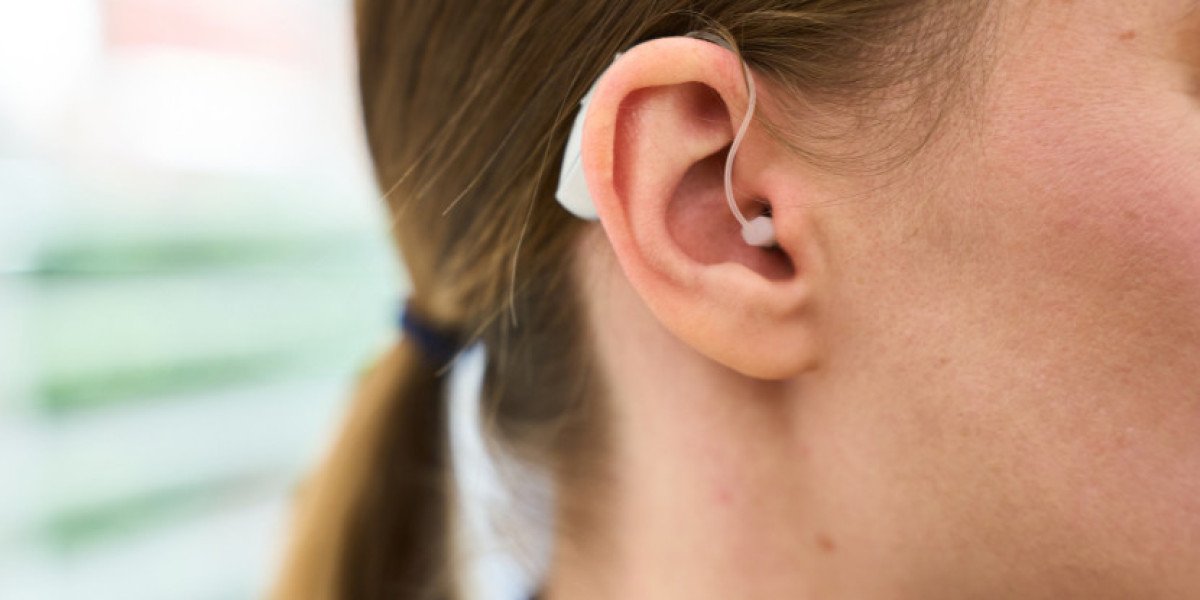What is driving the growth of the global hearing aids market, and how are innovations reshaping hearing care worldwide?
The global hearing aids market is witnessing substantial growth driven by a rising prevalence of hearing loss, technological advancements in audiology, and increasing awareness about hearing health. The market reached USD 10.02 billion in 2024 and is projected to reach USD 19.35 billion by 2034, growing at a CAGR of 6.80% from 2025 to 2034.
Hearing loss affects over 430 million people globally, according to the World Health Organization (WHO), and this number is expected to surpass 700 million by 2050. With growing aging populations and better access to healthcare services, the adoption of hearing aids is on the rise. Furthermore, innovations such as AI-powered devices, Bluetooth connectivity, and rechargeable hearing aids are revolutionizing the market.
Market Overview
The hearing aids market includes medical devices designed to improve hearing by amplifying sound for individuals with partial hearing loss. Hearing aids are available in various types — behind-the-ear (BTE), in-the-ear (ITE), and receiver-in-the-ear (RITE) — catering to diverse patient needs.
The market growth is supported by the following major factors:
Increasing geriatric population prone to hearing impairments.
Technological advancements in digital and AI-driven hearing aids.
Expanding access to hearing care services in emerging economies.
Growing awareness and reduction in the social stigma associated with hearing loss.
Hearing Aids Market Size and Growth Forecast (2025–2034)
Market Value (2024): USD 10.02 Billion
Forecast (2034): USD 19.35 Billion
CAGR (2025–2034): 6.80%
The market is expected to experience strong growth due to innovations in miniaturization, wireless technology, and AI-based sound processing, improving both comfort and user experience.
Key Market Trends
Several transformative trends are shaping the future of the hearing aids industry globally:
AI Integration: Devices with machine learning algorithms that automatically adapt to the user’s environment.
Bluetooth and Connectivity Features: Modern hearing aids can now connect to smartphones, TVs, and other devices.
Rechargeable Devices: Eco-friendly rechargeable batteries replacing disposable ones.
Remote Programming: Cloud-based platforms allow audiologists to remotely adjust settings for patients.
Increased Customization: Personalized fit and sound calibration enhance comfort and efficacy.
Market Breakup by Product Type
1. In-the-Ear (ITE) Hearing Aids
Compact and comfortable, ITE aids fit entirely within the outer ear. They are popular for mild to severe hearing loss and offer discreet use.
2. Receiver-In-the-Ear (RITE) Hearing Aids
These devices provide better sound clarity with external receivers placed close to the eardrum. They are increasingly preferred for their sleek design and superior sound processing.
3. Behind-the-Ear (BTE) Hearing Aids
BTE hearing aids dominate the market due to their versatility, long battery life, and suitability for various hearing loss levels. They are also easier to handle for elderly users.
4. Canal Hearing Aids
Placed in the ear canal, these aids are nearly invisible and favored for cosmetic appeal. However, they are more suitable for mild to moderate hearing loss.
Market Breakup by Technology
Digital Hearing Aids
Digital technology has replaced analog systems in most markets. These devices convert sound into digital signals, offering features such as noise reduction, directionality, and feedback cancellation.
Benefits include:
Enhanced sound clarity
Better speech understanding
Adaptability to different sound environments
Analog Hearing Aids
While less common, analog hearing aids still serve users seeking cost-effective solutions. They amplify all sounds equally and are simpler in design.
Market Breakup by Type of Hearing Loss
Sensorineural Hearing Loss
This segment holds the largest market share, driven by age-related hearing loss, prolonged noise exposure, and genetic factors. Advanced digital aids are widely used for this type of hearing loss.
Conductive Hearing Loss
Occurs due to blockages or damage in the ear canal or middle ear. Hearing aids used here focus on amplification and sound clarity to overcome the mechanical barrier.
Market Breakup by Patient Type
Geriatrics: Represent the largest share, as hearing loss prevalence increases with age.
Adults: Rising due to occupational noise exposure and lifestyle factors.
Children: Pediatric-focused hearing aids are gaining traction, especially for congenital or early-onset hearing loss.
Market Breakup by End User
Hospitals: Provide advanced diagnostic and fitting facilities.
Otology Clinics: Specialized centers focusing on hearing assessment and personalized device fitting.
Ambulatory Clinics: Growing segment for outpatient treatment and follow-ups.
Others: Include retail chains and online distribution platforms.
Regional Insights
North America
Dominates the global hearing aids market due to the high prevalence of hearing disorders, advanced healthcare infrastructure, and presence of leading companies such as Sonova and Starkey Laboratories. The U.S. leads the region with widespread adoption of digital hearing aids and strong insurance coverage.
Europe
Europe remains a major market due to strong awareness and government initiatives for hearing healthcare. Countries like Germany, Denmark, and the U.K. have high device adoption rates supported by reimbursement schemes.
Asia Pacific
Expected to witness the fastest CAGR due to growing aging populations in Japan, China, and India, coupled with increasing healthcare investments and affordability of hearing devices.
Latin America
Countries such as Brazil and Mexico are showing growing awareness and healthcare spending on audiology, contributing to steady market expansion.
Middle East and Africa
Market growth is supported by improving healthcare infrastructure and initiatives promoting early hearing screening in countries like UAE and South Africa.
Market Growth Drivers
Rising Global Prevalence of Hearing Loss: Due to noise exposure, aging, and ototoxic drugs.
Technological Innovations: AI-driven and Bluetooth-enabled hearing aids improving user satisfaction.
Supportive Government Policies: Programs for hearing screening and subsidies for hearing devices.
Increasing Awareness: Reduction in stigma and improved accessibility to hearing solutions.
Growing E-commerce Distribution: Online sales and virtual consultations expanding product reach.
Recent Developments
WS Audiology launched Signia AX, an AI-powered hearing platform for enhanced sound clarity.
Sonova acquired several regional audiology service providers to expand its global footprint.
GN Group introduced ReSound OMNIA with advanced speech understanding features.
Starkey unveiled Evolv AI, a next-generation hearing aid featuring edge mode for real-time adjustments.
Amplifon expanded its service network across Asia Pacific and Europe.
Challenges in the Hearing Aids Market
Despite steady growth, the market faces notable challenges:
High Device Costs: Advanced hearing aids can be expensive, limiting adoption in low-income groups.
Limited Awareness in Developing Regions: Lack of screening and diagnostic infrastructure.
Social Stigma: Many patients delay treatment due to misconceptions about hearing aid visibility.
Battery and Maintenance Issues: Older models require frequent servicing and battery changes.
Leading Companies in the Hearing Aids Market
WS Audiology A/S
GN Group
Sonova
Sivantos Group
Microson S.A.U.
Horentek
RION CO. Ltd
Amplifon
Starkey Laboratories, Inc.
SeboTek Hearing Systems, LLC
Audina Hearing Instruments, Inc.
Arphi
These companies are investing in R&D, product miniaturization, and AI integration to enhance device functionality and user comfort.
See More Reports
About Us:
Expert Market Research is a leading market research firm delivering data-driven insights to the pharmaceutical, biotechnology, and medical device industries. Our comprehensive research solutions include market research reports, providing in-depth analysis of industry trends and competitive landscapes; drug pipeline reports, tracking drug development progress, clinical trials, and regulatory approvals; epidemiology reports, offering detailed disease prevalence and patient population studies; and patent reports, assessing intellectual property landscapes and innovation trends, among others.
Leveraging proprietary data, advanced analytics, and expert methodologies, we help businesses navigate complex markets, optimize strategies, and drive innovation. We empower clients with actionable intelligence, enabling them to make informed decisions and stay ahead in the rapidly evolving healthcare sector.
Media Contact:
Company Name: Claight Corporation
Contact Person: Roshan Kumar, Digital Marketing
Email: sales@expertmarketresearch.com
Toll-Free Number: US +1-415-325-5166 | UK +44-702-402-5790
Address: 30 North Gould Street, Sheridan, WY 82801, USA
Website: www.expertmarketresearch.com








